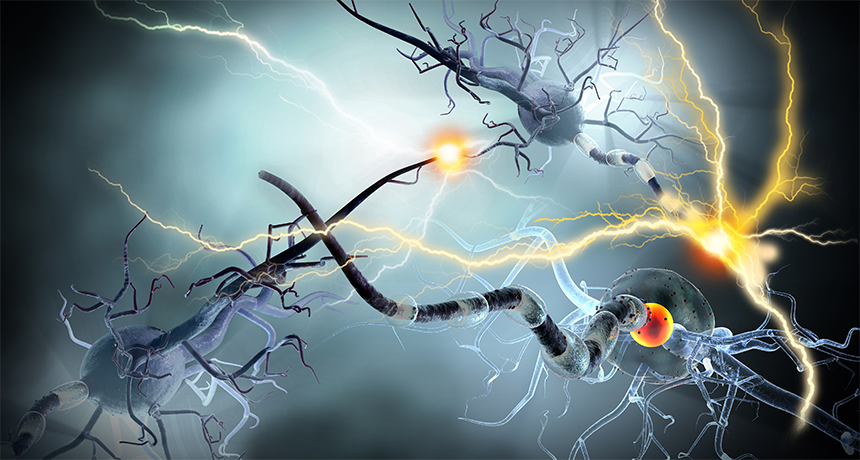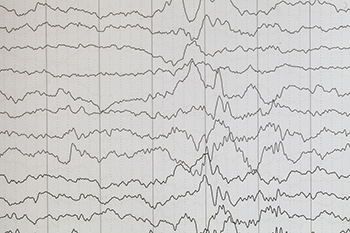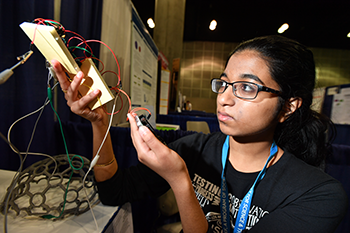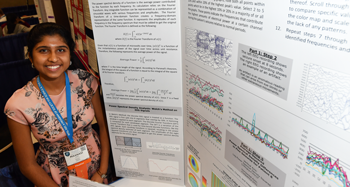When is an epileptic seizure about to strike?
By analyzing brainwaves, two teens may have found techniques to scout for early warnings

Epilepsy is characterized by an uncontrolled series of electrical discharges in the brain that leads to seizures.
Ralwel/iStockphoto
By Sid Perkins

LOS ANGELES, Calif. — Seizures can be debilitating. They can strike with little or no warning. And if one comes on when someone is driving or engaged in some other type of physical activity, they might also prove dangerous. But research projects by two teens now suggest that a simple device that monitors brainwaves might warn when a seizure is on the way. And that may save lives, the young researchers say.
Epilepsy is believed to stem from overactive neurons, or brain cells that conduct electricity. This brain disorder often triggers seizures, which are uncontrolled “electrical storms” in the brain. Each patient’s epilepsy can be somewhat unique. In some people, those electrical storms occur throughout the brain. In others, the storms are more localized. That is, they take place in one particular part of the brain. For many people, medicine can partially or totally eliminate the risk of seizures.
When seizures occur, they may be mild. Other times, they can strike severely and without warning, lasting several minutes or more. People with epilepsy often take great care to avoid activities that could pose risks if a seizure occurred. (And in many states, epilepsy may make it hard for people to get a driver’s license.)

Neha Hulkund is an 11th-grader at Tesla STEM High School in Redmond, Wash. (STEM stands for Science, Technology, Engineering and Mathematics.) This 17-year-old appreciates how dangerous seizures can be. A family member had one while riding a bike down a street in India crowded with traffic. Her relative wasn’t seriously injured. But if a seizure caused someone to fall in front of moving cars, and the brain storm temporarily incapacitated them, the situation could have been dire, she notes.
This got Neha to thinking: Is there some way to tell when a seizure is coming? The teen decided to analyze brainwaves that had been recorded in epileptic patients as part of a 2008 study at Boston Children’s Hospital. Why choose those? They are available online for free. So anyone can analyze them, she notes.
Her preliminary work appears successful. Although patients in the study were children, epilepsy can last a lifetime. So her analysis might be useful for adult patients too.
Machine learning scouted for patterns
Neha focused on brainwaves recorded in five patients. Together, they had suffered 20 seizures as doctors had been scanning their brain activity. Some scans had lasted an hour or more, Neha notes. Throughout, patients had worn a stretchy cap that included a lot of electrodes. More than a dozen of those sensors picked up electrical signals from inside the patient’s skull. Wires carried those signals to a recorder.
In the data set Neha used, doctors had marked the beginning of each seizure. She then trained a computer to look for brain-activity patterns before each seizure that might signal an upcoming brain storm. She used a technique called machine learning. Computers that employ this technique are “taught” to scout for patterns in data (rather than being specifically programmed to do so). Here, Neha taught it to analyze brainwaves recorded just before each seizure began.
Sometimes, Neha analyzed only 30 seconds’ worth of pre-seizure data. Other times, the recordings were up to 5 minutes long.
Neha’s method of scouting brainwave patterns would appear to predict impending seizures 3 minutes before they occurred. And they did that with 96 percent accuracy. A 5-minute warning based on her technique would be less accurate, at around 87 percent. But if a 30-second warning is all that’s desired, the method would be more than 99 percent accurate, her data suggest.
However, the teen notes, the more warning patients can get of an impending seizure, the better the chance they can safely stop what they’re doing.
Such warnings could come from a small electronic device that a patient might wear, the teen explains. That mini-computer would get its data from sensors in a cap or other headgear worn by the patient. It’s possible the data could be transmitted wirelessly. So, the monitoring system wouldn’t have to be obvious to others.
Neha showcased her research last week, here, at the Intel International Science and Engineering Fair. ISEF was created by Society for Science & the Public and is sponsored by Intel. The competition lets students from around the world show off their winning science fair projects. (The Society also publishes Science News for Students.) This year, nearly 1,800 high school students from more than 75 countries competed for big prizes and the ability to display their research findings. Neha’s project earned her two awards and a cool $1,500.
Related project also suggests promise
Another ISEF finalist conducted similar research this year. She even used data from the same study at Boston Children’s Hospital. Maanasi Garg attends Stanton College Preparatory School in Jacksonville, Fla. In her analyses, this 11th-grader looked at brainwave patterns from eight patients. The teen used statistics to compare patterns recorded before and during seizures with patterns during normal brain activity. Unlike Neha, Maanasi only looked at brainwave patterns recorded in the 30 seconds leading up to a seizure.

In particular, Maanasi looked at brainwaves of certain frequencies. For seven of the eight patients she studied, brainwaves cycling between 70 and 100 times per second contributed the most electrical power during seizures. And for six of those seven patients, brainwaves at those frequencies showed a distinct pattern that indicated a seizure was on its way.
So, like Neha, Maanasi found that early warnings of a seizure might be possible for many patients. She also suggests that seizure-prone patients could wear a sensor-laden cap and an electronic device to monitor their brainwaves. “Thirty seconds would likely be enough warning to stop any dangerous activity,” she notes.







